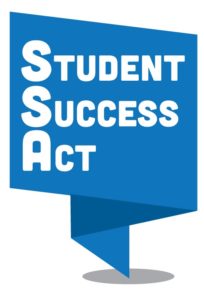Bethel District Finalizes & Approves Student Investment Application
After 20 stakeholder meetings spanning between November 2019 to February 2020, on Monday afternoon, the Bethel School District finalized, and the school board approved, their Student Success Act (SSA) grant application.
With an expected influx of over $4.6 million, the spending plan prioritizes the following spending areas:
- Reduce academic disparities
- Meet student’s mental and behavioral needs
- Provide access to academic courses
- Create suficient time for teacher/staff collaboration, data review and strategic planning to supprot students.
Additional details, slide deck and other information is available on the Bethel School District SSA page.

Analysis
The “Student Investment Account Grant Application” to the Oregon Department of Education is not a very readable nor accessible document for parents and outside stakeholders. This isn’t entirely unexpected. However, the additional materials help to fill in the gaps.
As theState’s Infographic and Bethel’s SSA backgrounder spells out, the Student Investment Account (SIA) portion of the funds (which accounts for 50% of all SSA funds) only allow grant funds to be used in the following four “broad areas”:
- Decreasing class size
- Expanding well-rounded education
- Increasing instructional time
- Addressing student health & safety needs
Bethel carried out a total of about 20 stakeholder input meetings with family members, students, and staff. (The slide deck d from Bethel enumerates the “input themes” across these groups.)
There was a consistent theme from data provided and from stakeholders wanting to better meet the needs of under-served groups such as students with disabilities as well as students “navigating homelessness.”
The application that Bethel will submit indicates a desire to achieve that.
Glossary
Some terms referenced in the documents weren’t familiar to me, so I thought I’d share what they mean:
McKinney-Vento: Full name is the federal McKinney-Vento Homeless Assistance Act, which is the primary piece of federal legislation that relates to the education of children and youth experiencing homelessness. SeeWikipedia.
QEM: This is the Oregon Department of Education’s (ODE) “Quality Education Model”. In Oregon, the passage of Ballot Measures 5, 47, and 50 shifted the primary responsibility of funding schools from local communities to the state. In response, the
state has become more involved in determining how much money is adequate, leading in turn to an examination of how school districts spend their funds. See ODE website and Oregon Education 101 website.
QMHA: Qualified Mental Health Associates is a part of Family SkillBuilders, which provides services to help build strong families.
ELS: English Language Arts?
RAN: Unknown…
